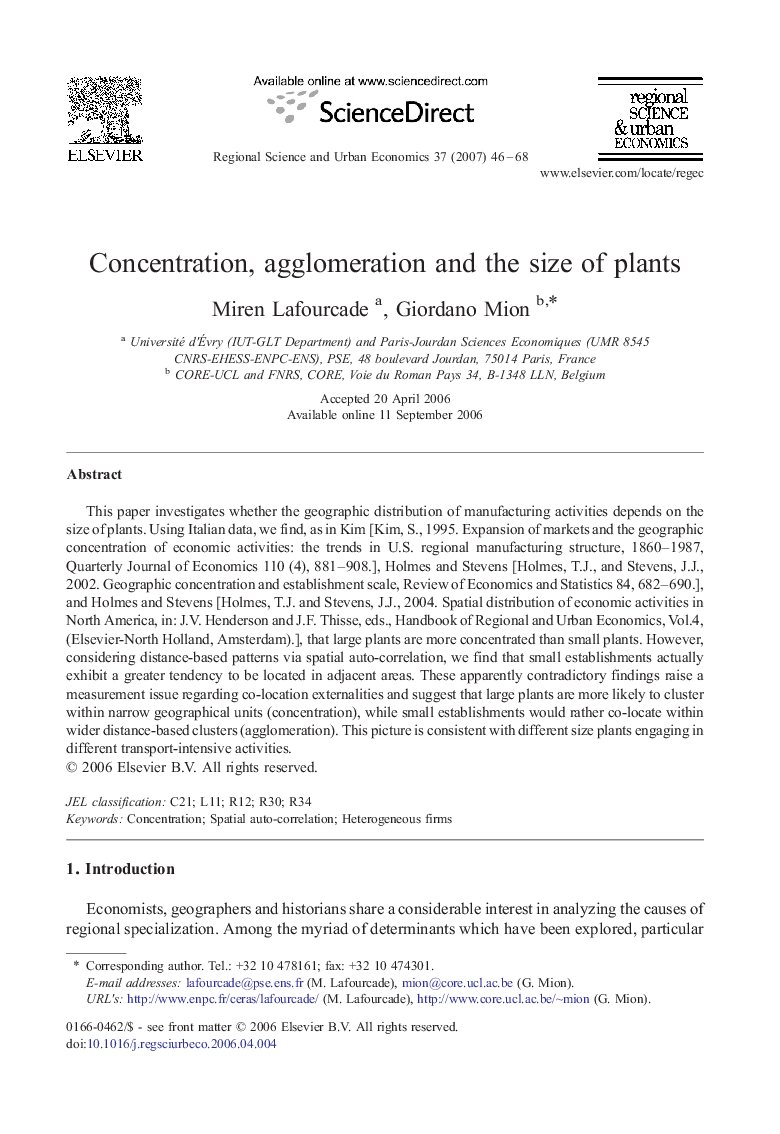| Article ID | Journal | Published Year | Pages | File Type |
|---|---|---|---|---|
| 983951 | Regional Science and Urban Economics | 2007 | 23 Pages |
This paper investigates whether the geographic distribution of manufacturing activities depends on the size of plants. Using Italian data, we find, as in Kim [Kim, S., 1995. Expansion of markets and the geographic concentration of economic activities: the trends in U.S. regional manufacturing structure, 1860–1987, Quarterly Journal of Economics 110 (4), 881–908.], Holmes and Stevens [Holmes, T.J., and Stevens, J.J., 2002. Geographic concentration and establishment scale, Review of Economics and Statistics 84, 682–690.], and Holmes and Stevens [Holmes, T.J. and Stevens, J.J., 2004. Spatial distribution of economic activities in North America, in: J.V. Henderson and J.F. Thisse, eds., Handbook of Regional and Urban Economics, Vol.4, (Elsevier-North Holland, Amsterdam).], that large plants are more concentrated than small plants. However, considering distance-based patterns via spatial auto-correlation, we find that small establishments actually exhibit a greater tendency to be located in adjacent areas. These apparently contradictory findings raise a measurement issue regarding co-location externalities and suggest that large plants are more likely to cluster within narrow geographical units (concentration), while small establishments would rather co-locate within wider distance-based clusters (agglomeration). This picture is consistent with different size plants engaging in different transport-intensive activities.
